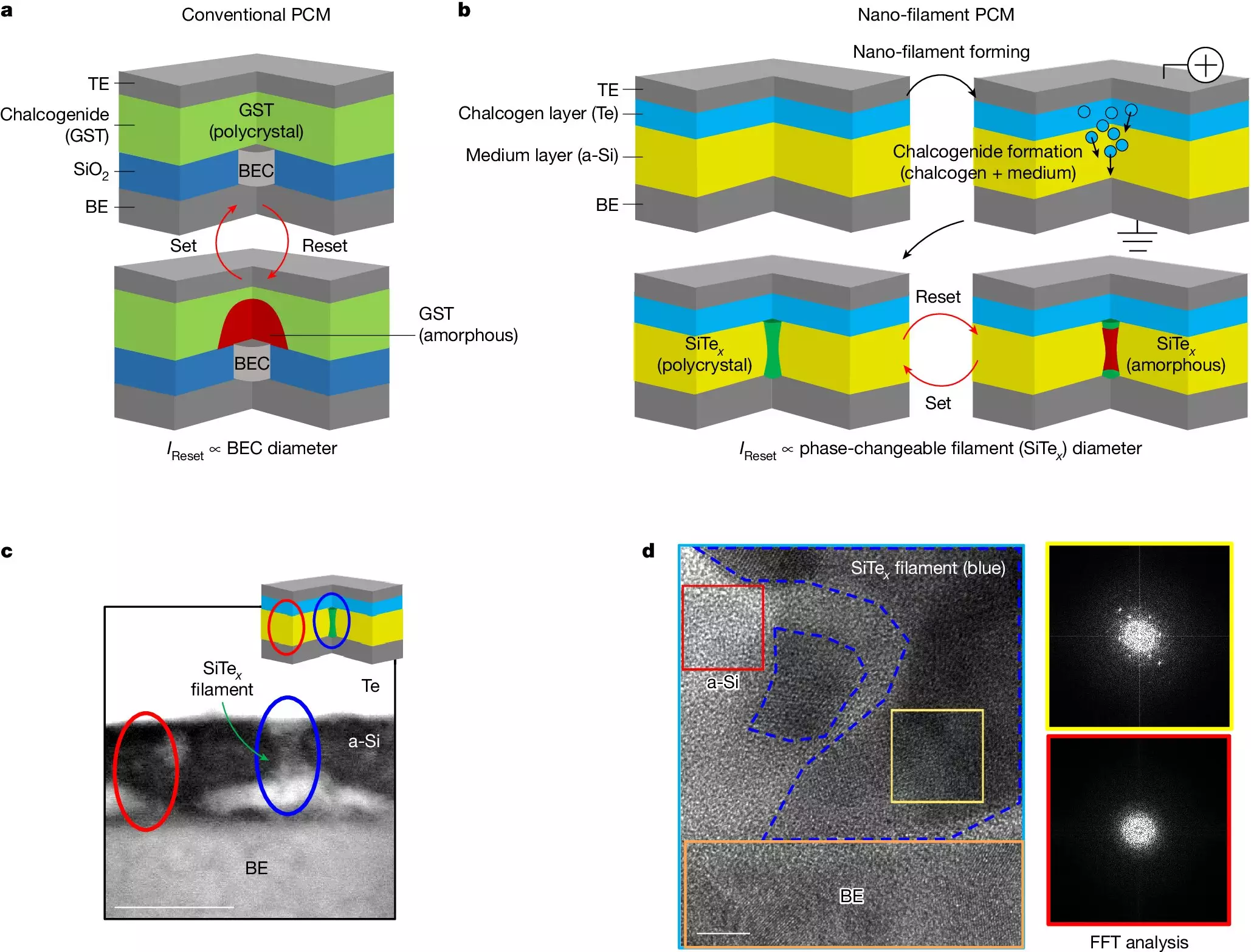In a groundbreaking development, a team of Korean researchers has recently unveiled a new memory device that could potentially revolutionize the field of artificial intelligence hardware. Led by Professor Shinhyun Choi from the KAIST School of Electrical Engineering, the research team has successfully created a next-generation phase change memory device with ultra-low-power consumption capabilities. This new memory device not only promises to be more cost-effective than existing memory technologies but also aims to pave the way for implementing neuromorphic computing in next-generation AI hardware.
Current memory technologies such as DRAM and NAND flash memory have their own set of limitations. DRAM is known for its high speed but volatile nature, as data is lost when the power is turned off. On the other hand, NAND flash memory offers non-volatile characteristics but has slower read/write speeds. Phase change memory seeks to combine the best of both worlds by providing high speed and non-volatile characteristics. Despite its potential, conventional phase change memory devices have struggled with high power consumption, which has hindered the development of practical large-capacity memory products and neuromorphic computing systems.
To address the power consumption issue, Professor Choi’s research team developed a new approach by electrically forming a very small nanometer-scale phase changeable filament in the memory device. This innovative method eliminates the need for expensive fabrication processes, making the new phase change memory device not only more cost-effective but also significantly low in power consumption. In fact, the new memory device consumes 15 times less power than conventional phase change memory devices, offering a promising solution to the energy efficiency challenges faced by existing memory technologies.
Professor Shinhyun Choi expressed his optimism about the future prospects of the research, highlighting the significance of the new memory device in addressing long-standing issues in the manufacturing of memory devices. With its improved manufacturing cost and energy efficiency, the ultra-low-power phase change memory device opens up new possibilities for developing advanced AI hardware that can operate with minimal power consumption. This breakthrough not only propels the field of memory technology forward but also positions neuromorphic computing as a viable option for building intelligent systems that mimic the human brain.
The development of the ultra-low-power phase change memory device marks a significant milestone in the field of memory technology and AI hardware. By overcoming the challenges posed by high power consumption in existing memory technologies, this innovative memory device offers a promising solution for researchers and engineers looking to build efficient and cost-effective memory products for next-generation artificial intelligence systems. As the research continues to evolve, the prospects for implementing neuromorphic computing in AI hardware are brighter than ever, thanks to the pioneering efforts of Professor Shinhyun Choi and his research team.


Leave a Reply